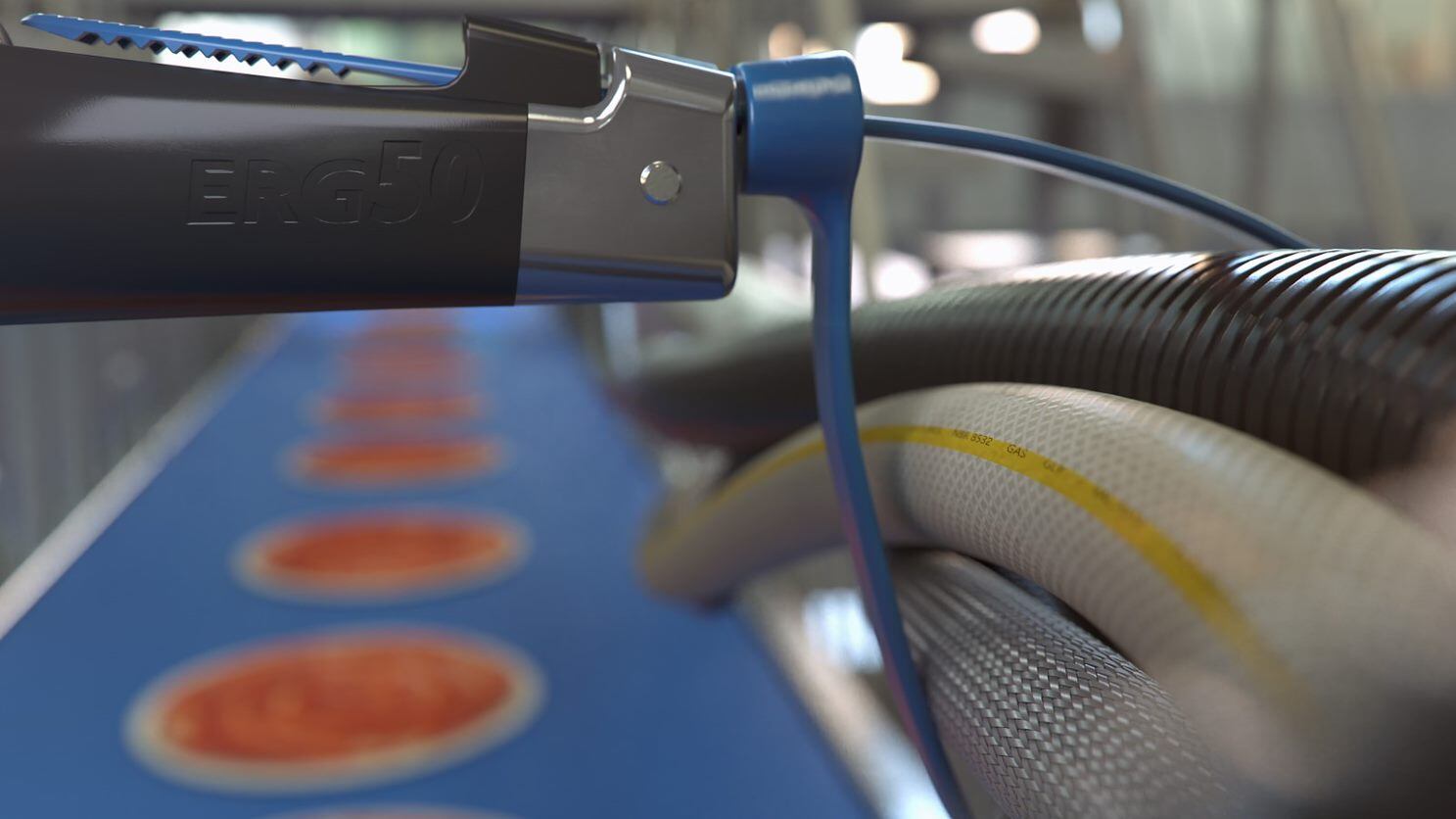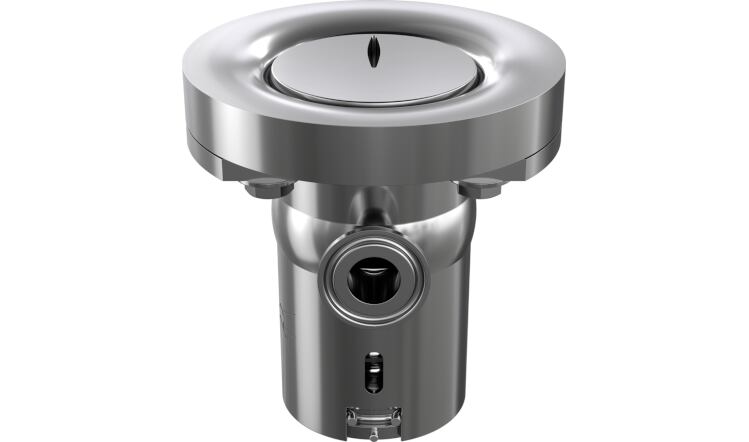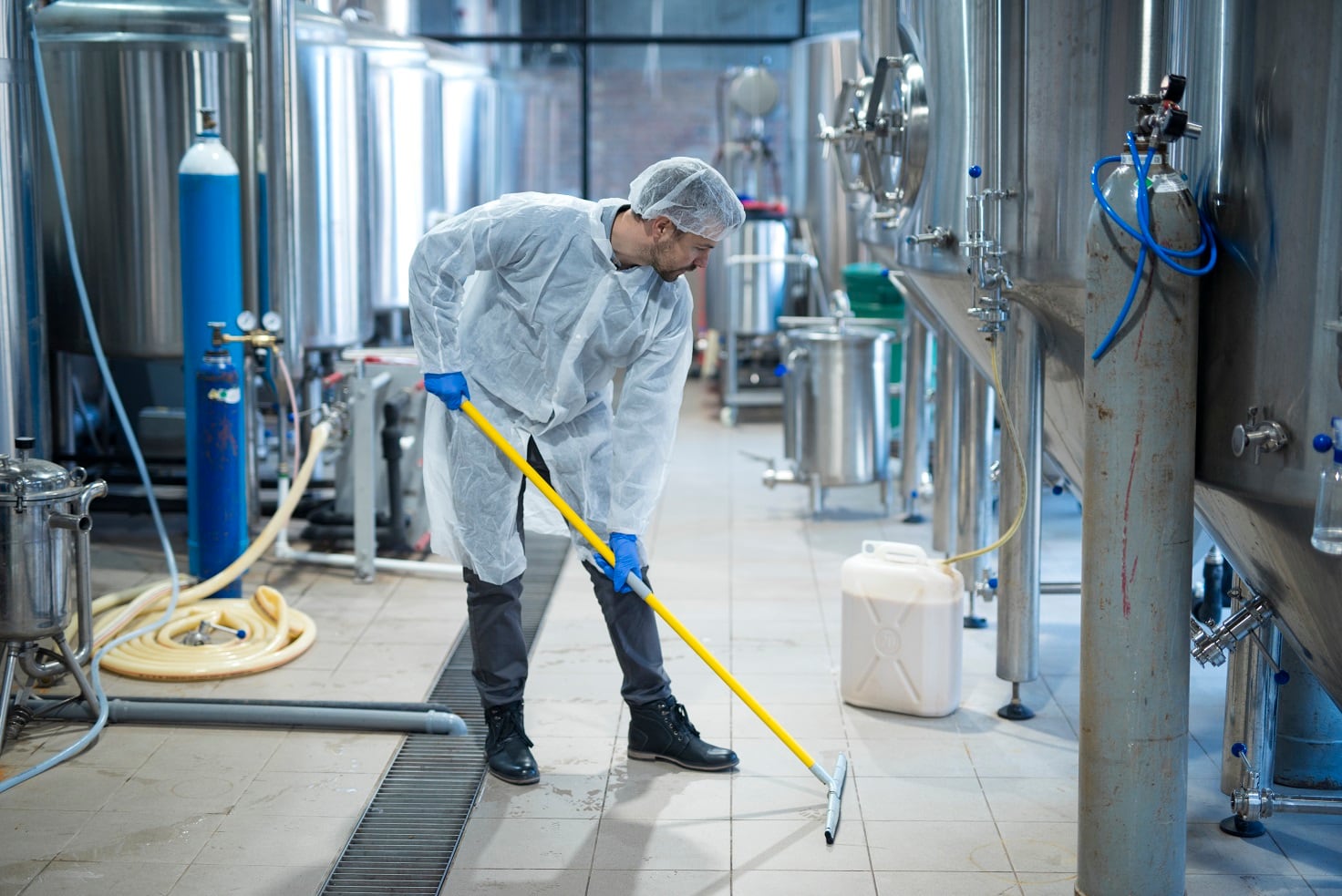Ty-Rap TyGenic cable ties help protect against many types of microorganisms such as bacteria, viruses, protozoans and fungi like mould and mildew, according to ABB.
The ties are moulded from an EU food contact-approved, halogen-free nylon resin blend that resist microbes from adhering and replicating on their surface.
Detectable particles
To further combat contamination, Ty-Rap TyGenic cable ties combine antimicrobial properties with detectable particles and a deep blue color for easy three-way identification via x-ray, metal and visual detection systems.
Made from UV-resistant material and designed for operating environments up to 85°C, the ties have the ‘Grip of Steel’ stainless steel locking device for “proven fastening performance” in commercial and household use.
Matthias Heilmann, ABB Installation Products Division president, said: “No one wants to worry about fragments in their product and risk costly contamination. Our Ty-Rap TyGenic cable ties combine antimicrobial technology with detectability and fastening performance to help customers create cleaner, safer environments.”
Safety standards
Ty-Rap TyGenic antimicrobial detectable cable ties are patent pending, available in four sizes and meet industry safety standards. They are produced at ABB’s Vega Baja, Puerto Rico facility and are available globally.
Whielt he ties have been tested to be 99% effective at inhibiting microbial growth, they provide no antimicrobial inhibitory activity beyond protection of the cable ties themselves.
Meanwhile, cleaning is an essential part of allergen control in the food factory, but special care must be taken to choose the appropriate method to avoid cross contamination, warned Christeyns Food Hygiene Technical Director Peter Littleton.
Since every contamination can be different, careful consideration must be made into which type of cleaning activity is needed in each situation. Informing these decisions are a bevy of tests that can help identify the type of allergen involved in the contamination.





